Chicken is commonly believed to be the easiest choice of meat to cook- and we agree!
However, it can still be challenging to get it right. You will be surprised to know the mistakes you have been making all these years.
These poultry-based mistakes include seeing a few blood clots here and there or blood oozing out after or while cooking. This sight can be unpleasant. And of course! Your chicken deserves better.
So in this article, we have put together all that can be done on how to fix bloody chicken before/while/after cooking.
Is Blood In Chicken Bad?
To get tender, finger-licking chicken, it is important that the chicken is not overcooked. And hence you might need the bloody, fresh chicken that might even be seen later in the cooking process.
Ideally, your chicken should overall be bright pink, including the thighs and wings.
The crevice areas can be a little difficult to get the blood out, and you must always pay extra attention to it. Your chicken is only bad if you notice discoloration or a grayish color in your meat: your meat is sadly going bad.
A smooth flesh that is not too stiff or squishy is what works best. Blood clots in the chicken are very undesirable and need to be avoided at ALL costs.
- Makes It Unappetizing
The first and foremost bad effect that blood in chicken can cause is that your kids and most adults won’t even eat it. The chicken appears to be fully cooked, smells nice- but kids wouldn’t touch it. And I’m sure a lot of yours wouldn’t, too.
- You Might Feel Uneasy
It does not cause a bad stomach or anything severe. However, a little feeling of uneasiness is expected when eating due to the active bacteria present in it. You may feel a little sick to the stomach and might want to throw up eventually.
Situation 1 Of 3: Blood Coming Out Of Chicken Before Cooking
It is not uncommon to see blood coming out of chicken before cooking.
The key step is to prep your chicken. For instance, my grandma usually defrosts and soaks her meat in a bowl of fresh water almost an hour before she intends to cook it.
People of Haiti use an effective technique to get all the unnecessary blood & mucus out of their meat. They fill a bowl with water, put the chicken inside it, and after leaving the bowl to rest for a good ten minutes. They pour the water that has turned cloudy and kind of disgusting to smell.
The meat is then rubbed properly with sour orange, lemon, or just plain lime over the body. You can also use drops of Vinegar in the water you have soaked your chicken into- for a more fresh and tender quality of meat.
Is It Normal For Blood To Come Out Of Chicken Before Cooking?
It is absolutely normal to witness blood in your chicken before you proceed to cook it. And there is nothing to be stressed about!
If you’re thinking that the chicken now needs to be disposed of then you might just want to wait and make it blood-free. You can use a disinfectant to clean your surface and then work towards stopping the blood flow.
This can be done by soaking the chicken in clean water. People often believe that soaking the meat will lead to water-borne bacteria splashing all over your kitchen counter. Then again, you can avoid this by disinfecting surfaces right after the process.
Is Bloody Chicken Safe To Cook?
Yes, it is absolutely safe to cook a bloody chicken. You do not have to stress about getting food poisoning as there are ways to get the blood out of the chicken.
A few ways include washing the chicken first and then rubbing it with sesame oil, vinegar, and lemon. This helps the chicken to be free of any blood clots, especially around the thigh and breast areas.
Not only does it draw out any unwanted blood but also enhances the flavor of chicken by making it relatively juicy and tender than before.
Pathogens present in the chicken often die when chicken is cooked at a higher temperature. As per USDA says as long as all parts of the chicken have reached an internal temperature of 165°, it is super safe to eat.
Reasons Why Chicken Gets Bloody Before Cooking
The chicken can get bloody before cooking due to numerous reasons. These reasons range from the natural biology of the bird to how it eventually reaches your home and you clean it.
- It Is The Myoglobin
A study published in 2017, the Journal of Food Science and Technology notes after a chicken is slaughtered, its blood circulation stops.
As per USDA, the chicken is then let loose of the majority of its blood, and what little remains is present in the muscle tissues.
So all hemoglobin is removed in this process and only bits remain in the tissues along with some myoglobin near the bone areas. Most people say, the bloody chicken you think is bloody, in fact, only has red juices.
- Butchering Not Done Right
If the butchering process has not been carried out to the fullest, chances are that there will still be blood remains in the chicken. Ensuring that blood is completely drained, is the key here.
- Clots or Wounds
There is an open wound or a clot that is present somewhere under the tender tissues. This could be a key reason for blood to not stop either.
How To Remove Blood From Chicken Before Cooking
You can remove the blood from the chicken before cooking by doing some simple steps that go on from washing and brining the meat to make it all prepped for cooking.
What You’ll Need For The Process(Frozen Chicken)
If your chicken is frozen, here’s what needs to be done.
- Soak The Chicken In Salt
Take a bowl of lukewarm water and add a pinch of salt to it. Soak the chicken in the bowl of water, and let it be soaked for an hour depending on how frozen your chicken is.
- Remove Excess Blood & Mucus
After the chicken is not a mere ball of ice. Clean it to get rid of the excess blood & mucus present inside it.
- Get Rid Of Myoglobin
Wear a pair of latex gloves and carefully examine the meat inside out, get rid of the myoglobin present at the corner of the thighs of meat.
- Rub A Lemon
Now rub a lemon, lime, or sour orange all over the chicken to get rid of any bacteria present in it.
What You’ll Need For The Process(Fresh Chicken)
If the chicken is fresh and warm. These are the steps to follow:
- Wash With Tap Water
Wash the chicken with running tap water. Let the water flow in the deepest parts of the chicken or get rid of blood clots with slight knife cuts.
- Soak In Salt
Once you have washed the chicken, soak it in salt and water for 20 mins to get rid of any myoglobin inside out.
- Apply Lemon
Drain the water and squish a lemon or drops of vinegar to have completely bacteria-free chicken.
- Disinfect Counters
Disinfect your kitchen counters after the entire process.
Tips To Have Blood-free Chicken Before Cooking
A good tip to have clean, blood-free chicken is to
- Have the butcher do the job right. Slaughtering process should ideally drain all the excess blood out.
- Clean with water and brine the chicken to get all blood and red juices away.
Situation 2 Of 3: Blood Coming Out Of Chicken When Cooking
Did you panic after noticing a few drops of blood in the pan while the chicken is cooking?
It may seem odd at first if you have washed and rinsed your chicken properly.
However, such situations are likely to happen when we deal with meat, and chicken in general.
The most common cause of why it can occur is because of the rising temperature. The heat becomes more than what the chicken bears in the first place causing a disruptive chemical reaction.
This reaction causes the myoglobin to change its color to light pink. Moreover, the secreted juices from the chicken lose their rosy pink color. It is an utmost possibility that the chicken shows a red color near the bone after reaching a certain temperature.
Is It Normal For Blood To Come Out Of Chicken When Cooking?
When chicken is cooked at high temperatures, there may be a loss of blood in the meat. It is nothing to be stressed about or feel like the stock has gone to complete waste.
It is absolutely normal to witness physical changes in the chicken when cooking. These physical changes happen when bone marrow, and the muscle tissue contract and become firm when exposed to heat.
The walls become soft and are unable to keep the blood inside of them. Which results in blood and myoglobin oozing out, and into the cooking pan.
Is Bloody Chicken Undercooked?
Not always!
Sometimes you will witness that a properly cooked chicken will be red or even bleed. So it does not necessarily confirm that an undercooked chicken has to be red or have drops of blood on it.
It is not a food risk, and if properly cooked under a high temperature. It can be eaten like a regular chicken.
Reasons Why Chicken Gets Bloody When Cooking
If you are still pondering over the question of why the chicken gets bloody while cooking. The following reasons might help in getting more clarity.
- Physical Changes Due to Heat
The possible reason for Chicken getting bloody when cooking is mainly because of physical changes in the chicken. However, it is also possible to witness dark red blood even after cooking. The perfectly cooked chicken is red or sometimes even deep pink at the bone.
Mainly the reason for the bloody chicken is the tightening of tissues releasing all the juices from around the tissues and bone areas.
How To Remove Blood From Chicken While Cooking
While cooking your chicken, if you ever come across a little blood. You are more likely grossed out because it is clearly unappetizing.
What You’ll Need For The Process
Here’s how you can avoid the situation.
- Brine before Cooking
Add a little salt to your chicken before you cook to reduce the amount of redness.
- Par Cooking
Try par cooking- it is a process of gently cooking the chicken in broth before actual frying/ cooking
- Let The Chicken Rest
Use a baking sheet and then put your chicken on a cooling rack. As the chicken rests, the juices naturally release.
- Cook At Right Temperature
Then cook the chicken at 165 degrees making sure all parts of the chicken are cooked.
Tips To Have Blood-free Chicken While Cooking
A tip to follow to avoid this situation will be to have partially cooked chicken rest on a rack for a while, the natural red juices will release and you can give it a final cook.
Situation 3 Of 3: Blood Coming Out Of Chicken After Cooking
Imagine you have guests coming over, and you have fully prepared your chicken. The dessert is done, and before you finish off with the cooking. You notice that there is blood coming out of the cooked chicken.
As unexpected as it is, it does happen.
However, the taste may be moist and flavorsome it will contain tinges of redness on the surface of the chicken. What you need to necessarily take care of in this case is marination, cooking temperature, and the required time you are taking to cook the meat.
As the femoral artery flows along the thigh bone carrying the blood to the leg of the chicken. It may not be able to keep the blood fluid inside after being exposed to high cooking temperatures.
Is It Normal For Blood To Come Out Of Chicken After Cooking?
Yes, it is absolutely
As the femoral artery flows along the thigh bone carrying the blood to the leg of the chicken. It may not be able to keep the blood fluid inside after being exposed to high cooking temperatures.
This results in blood oozing out after cooking.
Is Bloody Chicken Safe To Eat?
When the chicken reaches 165 degrees and is cooked at the center. It kills all kinds of pathogens present inside it making it completely safe to eat.
Reasons Why Chicken Gets Bloody After Cooking
Here are some reasons why the situation occurs in the first place.
- Didn’t Pound The Chicken
The chicken had not been pounded properly until it had reached a thin size. Pounding your chicken before cooking it can help make it tender by shattering the available fibers inside it.
- Chicken Was Not Brined
The chicken had not been brined before it was exposed to a high cooking temperature. The process is similar to marination and allows the chicken to stay moist when you are cooking, or even after cooking.
- Not Using The Right Pot
One of the main reasons why the chicken gets bloody after cooking is not using the right utensils.
Ballentine is an important metal in utensils that helps keep the moisture inside. The deep shape of these pots helps the food to be moist. The chicken may turn out a little dry in this.
How To Remove Blood From Chicken After Cooking
After the chicken is done, you notice a few drops of blood. It is unlikely to fix the blood inside it. However, there are a few possible ways through which you can hide the visibility of blood; after you’re done cooking.
What You’ll Need For The Process
Following is what you can do in this situation. However, it is ideal that you do the right prepping process instead of regrets that you might face later.
- Let The Chicken Rest
Once you see the blood oozing, let the chicken rest. It is likely that it will keep bleeding for a bit.
- Change The Serving Utensil
Once ample resting time is given, shift the cooked chicken to another pan/serving plate.
- Recook
If possible, recook the chicken for a while. Or just reheat it.
- Garnish the Chicken
Garnish it well by presenting your chicken with a lot of greens.
Tips To Have Blood-free Chicken Before Cooking
- It is important to understand that it is completely safe to eat, and is not a threat to your health.
- You may remove the red part of your chicken if it disrupts your eating experience.
- You can add a food coloring pigment to hide the red spots
If Chicken Has Blood Is It Cooked?
Yes, a chicken can be perfectly cooked, and still have a few blood stains on its surface. Always pay attention to the juices of the chicken rather than the color.
If you feel like the chicken is raw, and it tastes disgusting. You can spit it out. But if the chicken is completely cooked and shows pink/red color only then it can be safely eaten and enjoyed.
What Are The Other Juices That Come Out Of Chicken?
There is a thick pink juice in the chicken that is also found in Pork and even Turkey. This is due to Myoglobin stored along with the muscles. Which is when mixed with water changes the color to pink.
Moreover, there are evaporated juices that come out of the chicken you cook meat on high heat. These juices are brown in color.
The interesting fact is that the juices of chicken are usually clear, and are mostly water. The colors that they get are from a molecule called myoglobin.
FAQs
Here are some more answers that could help.
Why Is My Chicken Pooping Blood?
It is not unusual for a chicken to excrete mucus or blood after it’s freshly cut. However, in the far-fetched scenario, it could be due to an injury or internal bleeding in the chicken leading to Coccidiosis.
It is an attack of a parasitic organism on the chicken’s intestinal lining that can cause the shedding of blood.
Should Fried Chicken Have Blood?
Your fried chicken should always be blood-free. If you notice blood spots on your chicken it is important that the next time you brine the raw chicken. Brining sucks the extra water as well as blood spots.
Should Chicken Legs Have Blood?
Oftentimes some dark red blood clogs onto the leg of chicken even after cooking. It is a common observation in properly cooked chicken to have red or deep pink clogs at the thigh bone of the chicken. It can be unpleasant to the eater but is not a risk.
Should Raw Chicken Have Blood?
Yes, it is common for a chicken to have blood in its most raw form. The chicken can be freshly butchered or even store-bought. In both situations, it is not unusual to have blood on the surface of the chicken. However, your next step should be to wash it properly before proceeding to cook.
Should There Be Blood In Chicken Wings?
No, there shouldn’t be blood in Chicken wings when you eat them. However, if you notice traces of blood in your wings. Feel free to inspect further. If they taste flavorsome and properly cooked, then you are good to go.
Bottomline
Cooking is an art. Art has forms and techniques, and it is not necessary that you will always get it right. It is impossible to know if the poultry that you have purchased will not have blood.
Sometimes you will wash, marinate, and cook it at 165 degrees. And still, witness a few redness along the thigh bone. However, the above ways can most help you to find answers to how to fix bloody chicken before/while/after cooking.
The key is to stay calm, present what you have cooked with good seasoning, and a smile!
- How Long Does Vegan Butter Last? Mystery Solved - January 9, 2024
- How Long Does Vegan Mayo Last - January 2, 2024
- From Pot to Plate: How Long Does Vegan Chili Last in The Fridge? - December 26, 2023

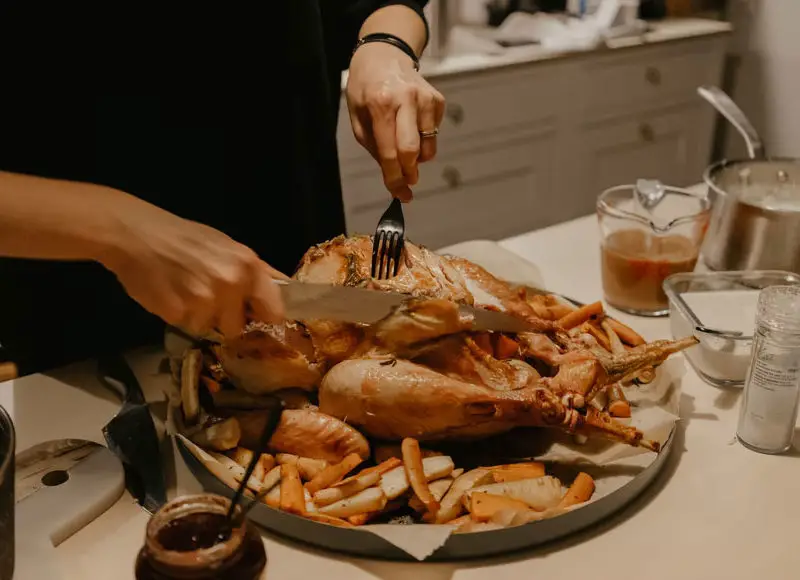

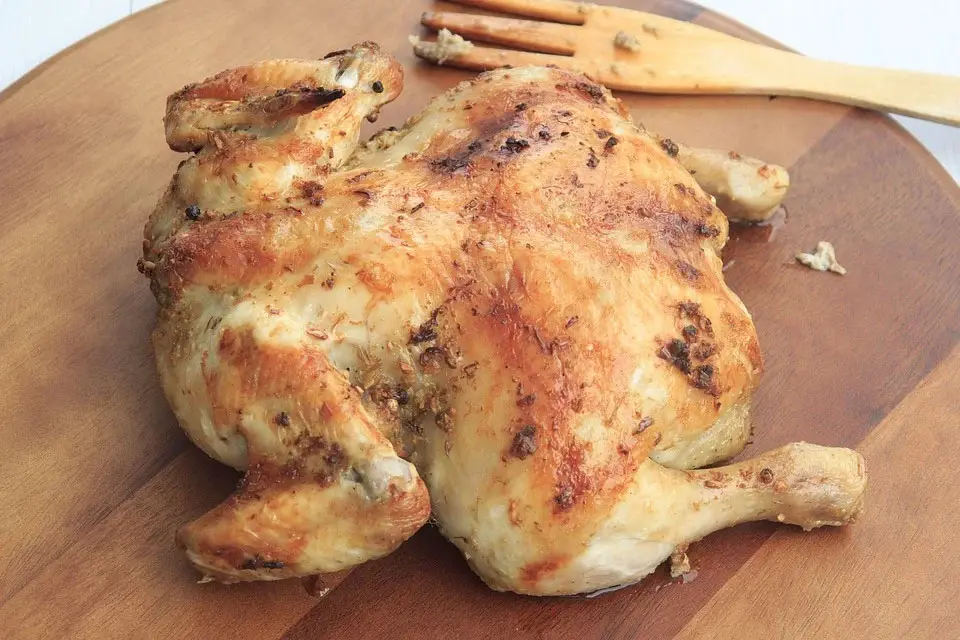
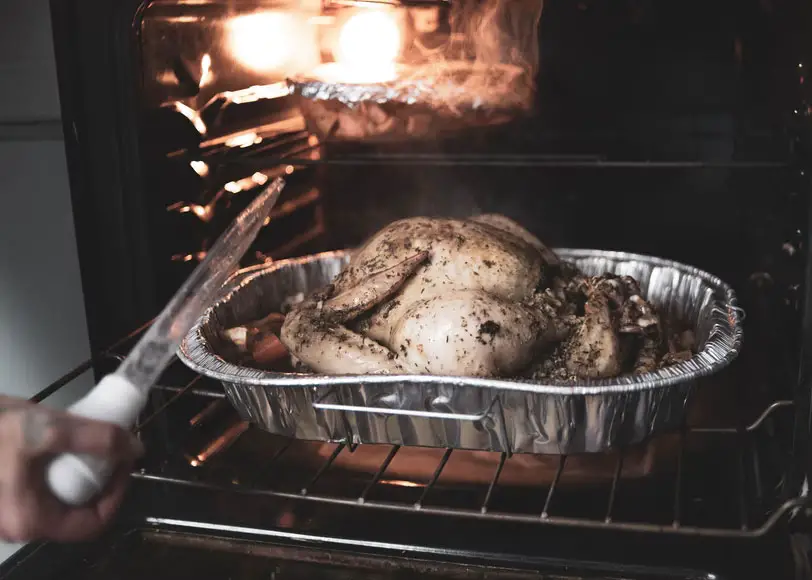
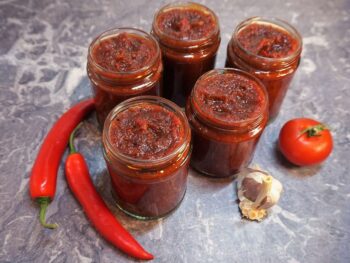
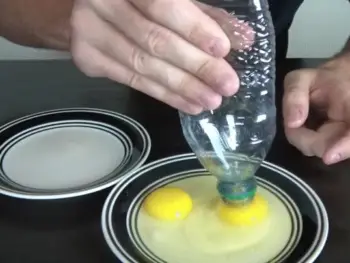







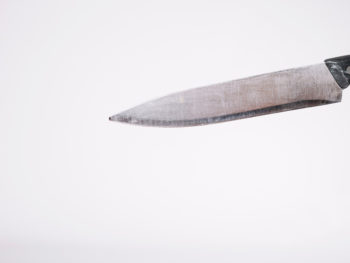
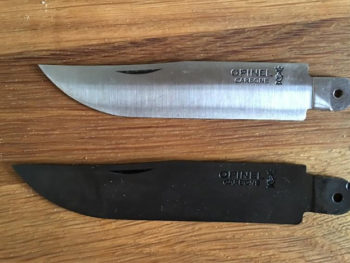
 Godfathers Pizza Dough Recipe: Key to a Tasty Deep-Dish Pizza
Godfathers Pizza Dough Recipe: Key to a Tasty Deep-Dish Pizza